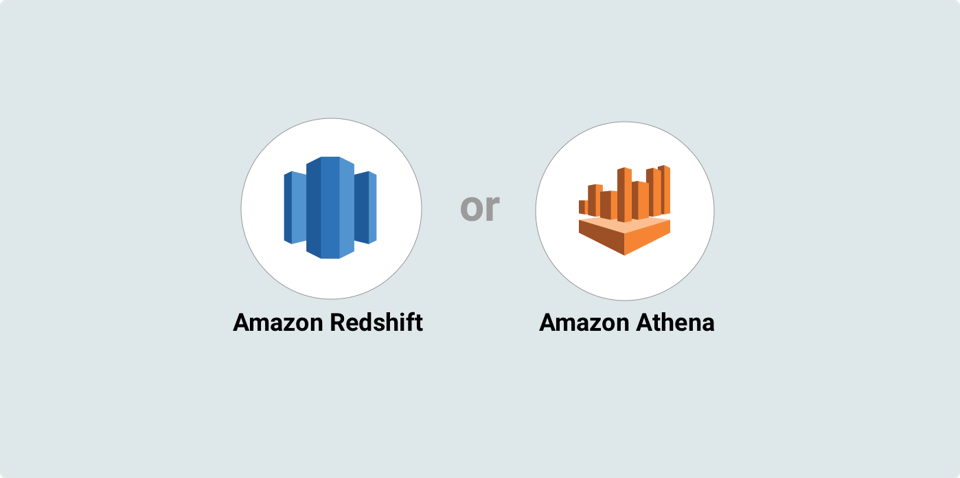
Amazon Athena vs. Redshift: Use Cases

What is Amazon Athena?
Amazon Athena is a serverless, interactive query service that enables you to analyze data stored in Amazon S3 using standard SQL. It allows you to perform ad-hoc queries on your data without the need to set up complex infrastructure or manage clusters. Athena is a convenient option when you have large amounts of data in S3 and want to quickly extract insights by running SQL queries.
Key Features and Benefits of Amazon Athena:
- Serverless and Cost-effective: With Athena, you pay only for the queries you run, eliminating the need for provisioning resources or managing infrastructure. This cost-effective approach allows you to focus on analysis rather than administrative tasks.
- Easy to Set Up and Use: Athena does not require any setup or maintenance. As it directly integrates with Amazon S3, you can start querying your data stored in S3 right away, using standard SQL.
- Scalability: Athena automatically scales resources based on the size of your data and the complexity of your queries. It can handle large datasets and complicated queries efficiently, ensuring optimal performance.
- Support for Various Data Formats: Athena supports several formats such as CSV, JSON, Parquet, Avro, and more. This flexibility allows you to work with data that is already structured or semi-structured, without the need for any data transformation.
What is Amazon Redshift?
Amazon Redshift is a fully managed, highly scalable data warehousing service that allows you to analyze large datasets with high performance. It is designed for online analytic processing (OLAP) and serves as an enterprise-level solution for complex data warehousing and reporting needs.
Key Features and Benefits of Amazon Redshift:
- Columnar Storage: Redshift utilizes columnar storage, which organizes data by columns rather than rows. This storage mechanism significantly improves query performance, as only the necessary columns are read during queries.
- Massively Parallel Processing (MPP): Redshift uses MPP architecture, which enables it to distribute and parallelize data across multiple nodes, accelerating query execution. This makes it highly suitable for complex queries involving large datasets.
- Integration with Other AWS Services: Redshift seamlessly integrates with various AWS services, such as AWS Glue for data cataloging and AWS Data Pipeline for ETL processes. This integration enhances the overall data workflow and simplifies data management.
- Scalability and Elasticity: Redshift allows you to scale your cluster up or down based on your needs, ensuring that you have the necessary resources to handle your data processing requirements efficiently. Additionally, Redshift Spectrum extends Redshift’s querying capabilities to query data stored directly in Amazon S3.
Amazon Athena vs. Redshift: Use Cases
Both Amazon Athena and Redshift are powerful data solutions, but they cater to different use cases. Understanding their strengths and suitable scenarios is essential to determine which service aligns with your organization’s requirements.
Use Cases for Amazon Athena:
- Ad-hoc Data Analysis: Athena is ideal for scenarios where there is a need for ad-hoc analysis of large volumes of data stored in Amazon S3. Its serverless nature eliminates the need for maintenance, allowing you to quickly extract insights.
- Data Exploration: If you want to explore and analyze data without having to define a fixed schema beforehand, Athena is a suitable choice. It supports a wide range of data formats, making it easy to query and analyze semi-structured or unstructured data.
- Log Analysis: Analyzing log files for troubleshooting or monitoring purposes can be efficiently performed using Athena. It leverages the power of SQL to extract meaningful information from log datasets stored in S3.
Use Cases for Amazon Redshift:
- Enterprise Data Warehousing: Redshift is designed for organizations with large datasets and complex reporting needs. It provides a powerful platform for data warehousing, enabling businesses to store, analyze, and gain insights from vast amounts of structured data.
- Business Intelligence and Analytics: If your organization requires real-time analytics and advanced reporting capabilities, Redshift can handle complex queries efficiently and provide near real-time insights. It is a preferred choice for business intelligence use cases.
- Data Integration and Consolidation: Redshift’s integration capabilities with AWS services make it an excellent option for consolidating data from different sources and running complex transformations. It serves as a central data hub for organizations dealing with diverse data sets.